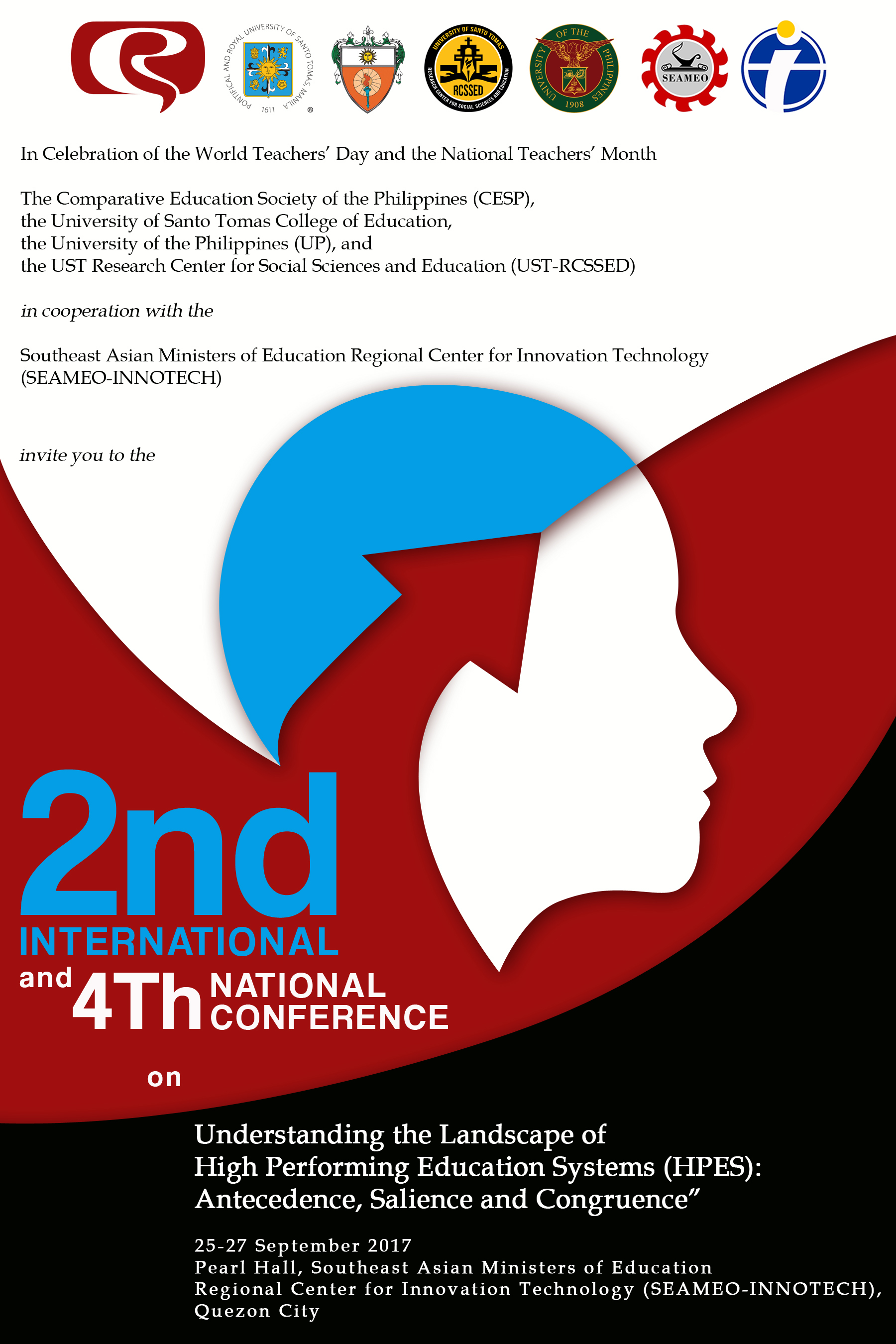

BACKGROUND OF THE CONFERENCE
Boosting the quality of education system and achieving improved education outcomes entail asystem-wide perspective and comparative international analyses that capitalize on close examination of policy structures, evidence-based practices and system and leadership accountability. The extent to which education systems perform at their level best determine the quality of student learning and outcomes. In recent years, the Programme for International Student Assessment (PISA) and the Trends in International Mathematics and Science Study (TIMSS) have been used as prism through which enabling factors that shape education productivity are elucidated and compared. Interestingly, variations in education systems functioning are vital compasses that help identify key drivers of change to inform policy, research and practice.
CONFERENCE AIMS
The 2nd International Conference and 4th National Conference is the Comparative Education
Society of the Philippines’ (CESP) commitment to create a dynamic, proactive and changedriven
platform of intersection of minds and practice among educators, school leaders and
managers, researchers and scholars across basic, higher and technical and vocational levels on
relevant and meaningful comparisons geared toward
A. Antecedence: Question of Priority
High Performing Schools and Schools System ensure that education expenditure is given the top priority. Such investment is evidenced by preservice teacher preparation, teacher entry requirements and qualifications, student-teacher ratio, teacher professional development, adequacy of physical infrastructure resources and material resources, equity of allocation of educational resources, intended learning time in school and after school, class size, and creative extracurricular activities in school, among others
B. Salience: Question of Importance
High Performing Schools and Schools System recognize that the only way to improve outcomes is to improve instruction. The pivotal role of teachers as instructional leaders and innovators in creating a meaningful space where a unique, responsive and developmentally appropriate pedagogy operates is vital and critical to student success and learning.
C. Congruence: Question of Consistency
High Performing Schools and Schools System is anchored on strong leadership philosophy and structure. By and large, the foundation of effective school improvement is leadership. As today’s schools become more complex and change-driven, the nature, process and context of today’s leadership invite school leaders to work uniquely and creatively. Effective leadership focused on teaching, learning and people is critical to the current and future success of schools. High-performing principals focus more on instructional leadership and the development of teachers.